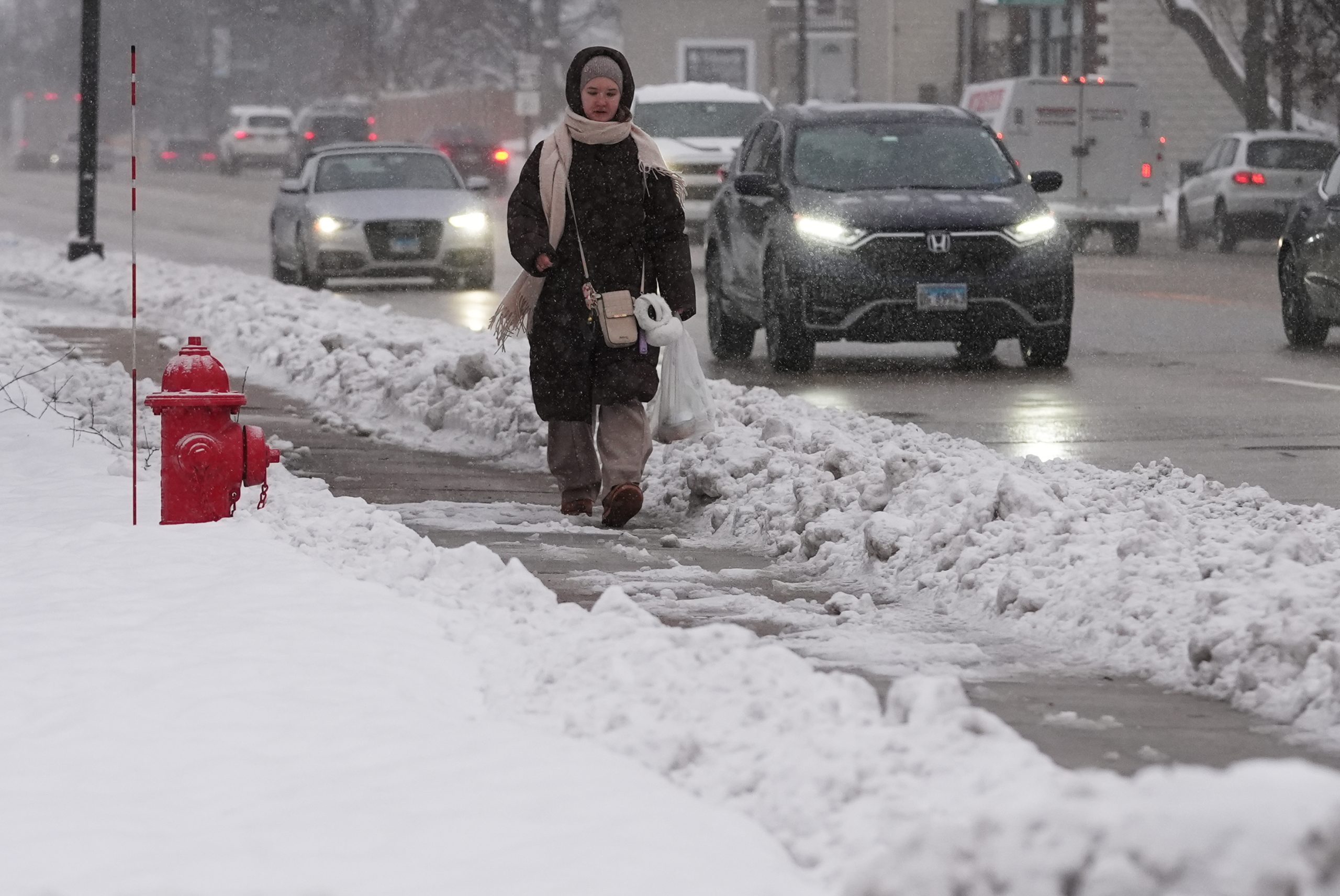DENVER — Single mom Caitlyn Colbert watched as rent for her two-bedroom apartment doubled, then tripled and then quadrupled over a decade in Denver — from $750 to $3,374 last year.
Every month, like millions of Americans, Colbert juggled her costs. Pay rent or swim team fees for one of her three kids. Rent or school supplies. Rent or groceries. Colbert, a social worker who helps people stay financially afloat, would often arrive home to notices giving her 30 days to pay rent and a late fee or face eviction.
“Every month you just gotta budget and then you still fall short,” she said, adding what became a monthly refrain: “Well, this month at least we have $13 left.”
Millions of Americans, especially people of color, are facing those same, painful decisions as a record number struggle with unaffordable rent increases, a crisis fueled by rising prices from inflation, a shortage of affordable housing and the end of pandemic relief.
The latest data from the Harvard Joint Center for Housing Studies, released in January, found that a record high 22.4 million renter households — or half of renters nationwide — were spending more than 30% of their income on rent in 2022. The number of affordable units — with rents under $600 — also dropped to 7.2 million that year, 2.1 million fewer than a decade earlier.
Those factors contributed to a dramatic rise in eviction filings and a record number of people becoming homeless.
“It’s one of the worst years we’ve ever seen,” said Whitney Airgood-Obrycki, a senior research associate at the Harvard center, who added that the level of cost-burdened households in 2022 had not been seen since the Great Recession in 2008, when 10 million Americans lost their homes to foreclosure.
After failing to make a significant dent in the problem over the last decade, state and federal lawmakers across the U.S. are making housing a priority in 2024 and throwing the kitchen sink at the issue — including proposals to enact eviction protections, institute zoning reforms, cap annual rent increases and dedicate tens of billions of dollars toward building more housing.
The hardest hit have been renters who made less than $30,000, and who, after paying rent and utilities, were left with just $310 a month on average, Airgood-Obrycki said.
“So you can certainly imagine the kinds of tradeoffs that have to happen,” she said. “Cost-burden renters are spending less on things like food and health care and retirement. So, there are significant implications for the long-term well-being of these households.”
In Denver, Colbert’s bathroom roof partly caved in from a leak last year, and the landlord delayed a fix even as rent went up $200 a month. It was the last straw for Colbert, who moved in to live with family and is purchasing a home through Habitat for Humanity, which gave her a low-interest loan.
“It’s so disheartening, paying so much and not even seeing where your rent is going,” Colbert said. “It just hits you like, ‘This is for nothing.’”
In Auburn, Massachusetts, pervasive rent hikes have already hit the last bastion of affordable housing.
Just off an interstate alongside a pond, residents at the American Mobile Home Park face rent increases upwards of 40%. Many tenants, mostly seniors and others on fixed incomes, haven’t signed new leases with those increases. The group Lawyers For Civil Rights has sent a letter to the landlord accusing it of “unconscionable rent increases,” and failing to provide critical services like adequate garbage and snow removal.
“How am I going to pay that?” said Amy Case, 49, wondering how she’ll balance the $345 monthly increase with the $200 she has to spend on medications and the cost of a twice-yearly MRI to monitor her brain tumor.
“I don’t know what else to cut back on,” said Case, an administrative assistant at a local college, who said she would only have $300 left over each month for other necessities. “Probably less groceries. I certainly can’t cut back on my medications.”
Another tenant, 72-year-old Ann Urbanovitch, who works as a cashier at a department store, is facing a similar rent increase.
“I expected it to go up $100, but $345. I was shocked,” she said. “I have to dip into my retirement savings … because, you know, times are tough.”
The mobile home park owner, Parakeet Communities, did not respond to a request from The Associated Press for comment.
With many families struggling to pay, landlords in Colorado are increasingly turning to evictions, with over 50,000 evictions filed last year, according to data from the Colorado Judicial Branch.
“2023 was the high-water mark for evictions filings in recorded Colorado history,” said Zach Neumann, co-CEO of the Community Economic Defense Project, which offers financial and legal assistance to Colorado residents struggling with rent.
Monique Gant, the mother of two boys, stuffed her belongings into boxes in a Denver suburb last week after losing a drawn-out eviction fight, planning to move between long-stay hotel rooms and her RV for now. Gant’s hair has thinned from the stress she buries beneath a stoic face for her children.
“My kids, they assume that I am Super Woman,” said Gant. But “when I go to take a shower, put some music on, I cry.”
Already, she said, her 10- and 11-year-old sons have been in fights at school and on the bus, and aren’t engaging with classes as they once did.
About 40% of those facing eviction each year are children — some 2.9 million, according to a study co-authored by Nick Graetz at Princeton University’s Eviction Lab, who said research shows wide-ranging impacts of housing turbulence and eviction on children’s mental health and development.
“We can see that things really fall off for children that experience eviction,” Graetz said.
In Congress, lawmakers are working on a bill that would expand a federal program that awards tax credits to housing developers who agree to set aside units for low-income tenants. Supporters say that could lead to the construction of 200,000 more affordable homes. Some lawmakers are also calling for more rental assistance, including a significant increase in funding for housing vouchers.
“A larger commitment from the federal government is required,” said Chris Herbert, managing director of the Harvard center. “Only then will the nation finally make a meaningful dent in the housing affordability crisis making life so difficult for millions of people.”
At the state level, Colorado lawmakers have proposed a bill to limit the reasons for which a landlord can evict a tenant. Other bills would scrap the filing fee for tenants in an eviction case, and roll back local rules prohibiting homeowners from renting out a separate unit on their property.
“If we don’t act now,” said Colorado Gov. Jared Polis in his state of the state speech last month, largely focused on housing, “we will soon face a spiraling point of no return.”
Other states feel the same urgency.
In Washington state, a bill would require that 10% of new housing around transit hubs be affordable for low-income residents. Another would bar landlords from increasing rent by more than 5% annually during a rental agreement term.
In Massachusetts, a bill would invest over $4 billion toward building and shoring up affordable housing in response to the state’s estimate that more than 200,000 additional homes will be needed by 2030. It would be the largest housing investment in state history.
However, it would come too late for the rent increase Urbanovitch faces to stay in her mobile home.
“My biggest worry,” she said, “is not really having a place to move to. There’s no place to go.”




